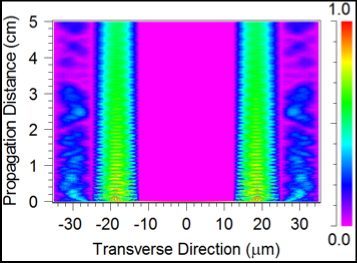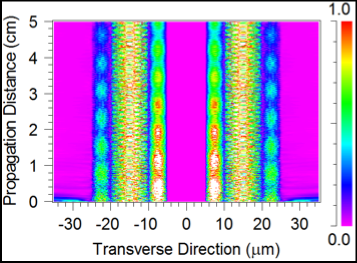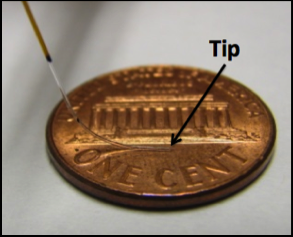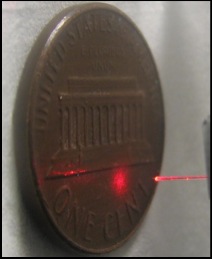Electrical Neural Probe (“Tetrode”)
Handcrafted “tetrodes”, formed by twisting 4 wires together, fusing the insulation, and clipping off the end, are the preferred recording electrodes for monitoring in vivo neuronal unit activity from freely moving animals (usually rodents or non-human primates). We have developed an improved approach for manufacturing tetrodes with integrated conductor wiring on a fine needle. There are two lithography steps. The first defines the conductor lines, and the second creates vias in the insulation where the conductor comes into contact with the cerebrospinal fluid. The technology should reduce nerve damage during surgical implantation and, for the first time, provide a platform for developing a family of predicable and well-characterized multi-sensing probes.
Our approach is based on atom beam proximity lithography, a diffraction-free, high throughput imaging technique, coupled with a plasma-deposited resist. The exposure step for defining the conductor lines is shown in Fig. 2, where resist-coated needles are held in V-grooves on a micro-machined silicon jig. Grooves on the opposite side of the jig intersect those holding the needles to form a perfectly aligned conductor mask. Exposing the mask with energetic helium atoms forms a negative tone image that is used to protect the conductor lines during a wet etching step. The vias are similarly defined. Fabrication issues and the results of in vitro electrical testing will be presented at the conference.

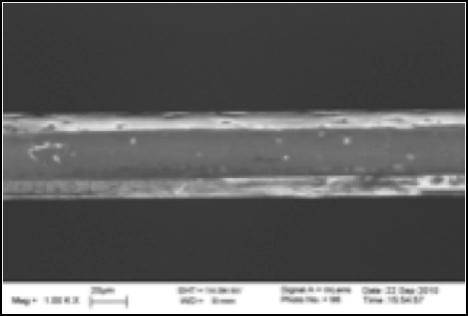
Optical Neural Probe (“Optrode”)
